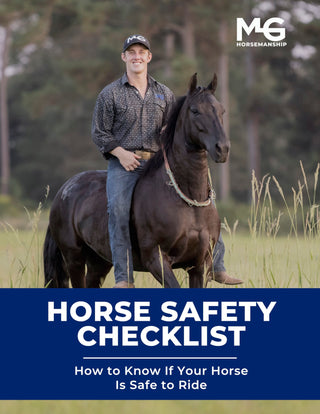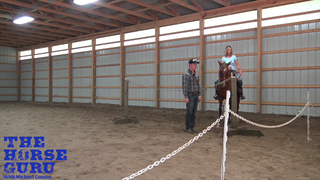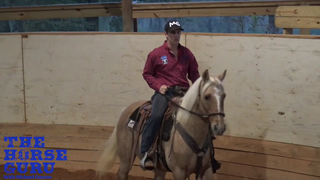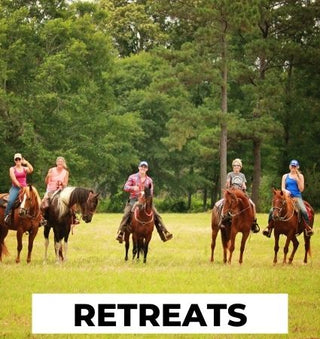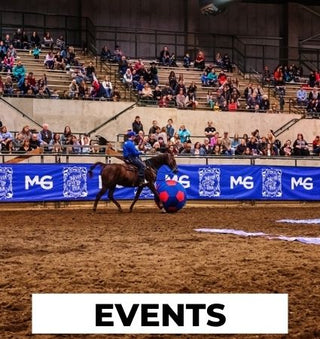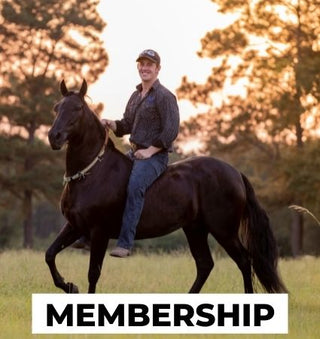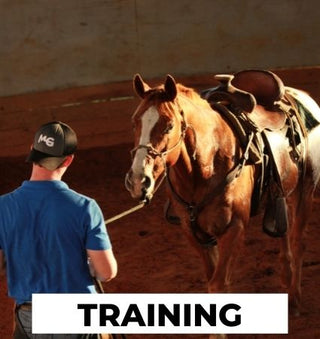Watch the Video Here or continue reading below!
Long lining is a powerful and versatile training technique for horses. In this guide, we’ll delve into the essentials of long lining, using insights from Michael Gascon, also known as the Horse Guru. Whether you’re preparing a young horse for riding or addressing specific challenges, long lining is an invaluable tool that can build confidence, enhance communication, and improve overall horse behavior.
What Is Long Lining?
Long lining involves working with a horse from the ground using two long reins. It’s particularly beneficial for:
-
Introducing young horses to the bit without the risks associated with riding.
-
Building confidence in both horse and handler.
-
Developing flexibility and suppleness in the horse.
-
Preparing horses for therapeutic or specialized programs.
Meet Bree: A Case Study
Michael introduces Bree, a Haflinger pony cross who is being trained for a therapeutic riding program. Bree’s small size makes him unsuitable for Michael to ride, so long lining is the perfect solution to advance his training safely.
Benefits of Long Lining
-
Safety: Perfect for handlers who feel unconfident or for horses that may react unpredictably under saddle.
-
Skill Development: Teaches horses to accept rein contact, transition smoothly, and respond to cues without resistance.
-
Versatility: Helps prepare horses for riding, driving, or pulling a cart.
Tools You Need
-
A full cheek snaffle bit: Gentle and prevents the bit from pulling through the horse’s mouth.
-
Drive lines: Around 25 feet long to provide ample working space.
-
Baling twine or hay string: Used to secure stirrups together for stability.
Step-by-Step Guide to Long Lining
Step 1: Preparation
-
Tie the stirrups together using baling twine. This stabilizes the lines and prevents tangling.
-
Allow the horse to get comfortable with the lines by wrapping them around their hindquarters. This familiarization step helps prevent panic during training.
Step 2: Introducing Contact
-
Attach the lines to the bit, ensuring they’re free of knots.
-
Begin with basic turns and transitions. Keep your movements soft and gradual to avoid startling the horse.
-
Encourage forward motion while maintaining light contact on the reins.
Step 3: Progressing to Advanced Movements
-
Guide the horse through walk, trot, and canter transitions. Reward correct responses with a release of pressure.
-
Use the reins to encourage bending and flexion, improving suppleness and responsiveness.
-
Practice inside and outside turns to enhance control over the horse’s front and hindquarters.
Common Challenges and Solutions
-
Horse hesitates to move forward: Use gentle encouragement, such as clicking or light pressure on the reins.
-
Resistance to the bit: Maintain a soft touch and avoid abrupt movements to build trust.
-
Tangling lines: Always ensure the lines are free of knots before starting.
Why Long Lining Builds Confidence
Long lining offers a safe way for handlers to work with their horses without the risks associated with riding. It allows you to:
-
Correct issues from a safe distance.
-
Build trust and communication with your horse.
-
Prepare the horse for real-world scenarios, such as riding or driving.
Final Thoughts
Long lining is an essential skill for horse trainers and enthusiasts alike. It’s a technique that promotes confidence, enhances communication, and prepares horses for various roles. Whether you’re working with a young colt or refining the skills of a seasoned horse, long lining can take your training to the next level.
Have questions or need additional guidance? Drop your comments below! We’d love to hear about your experiences and help you overcome any challenges you’re facing.
Get 30-day horse training for FREE—join the Horse Help Challenge now HERE!



